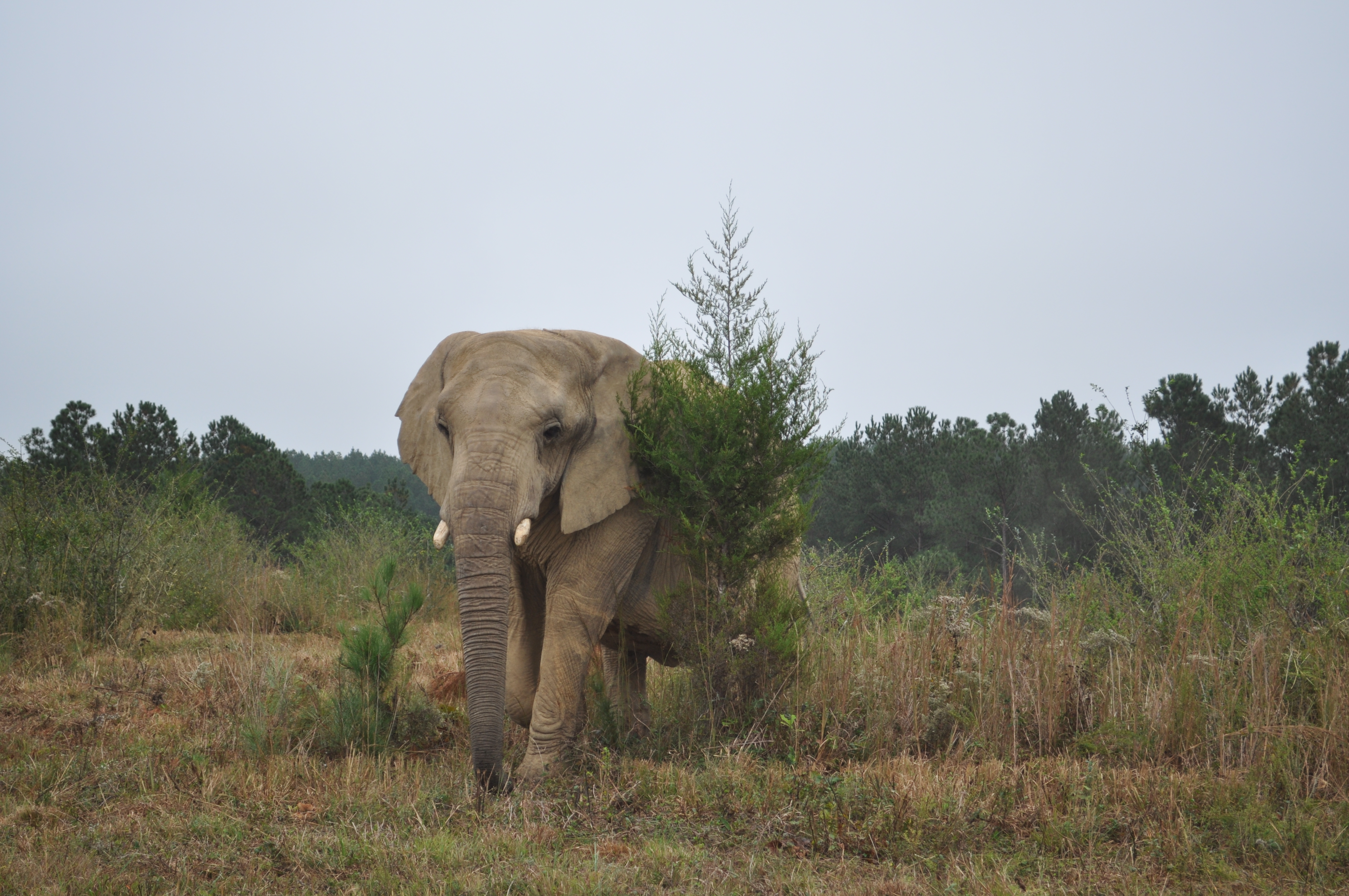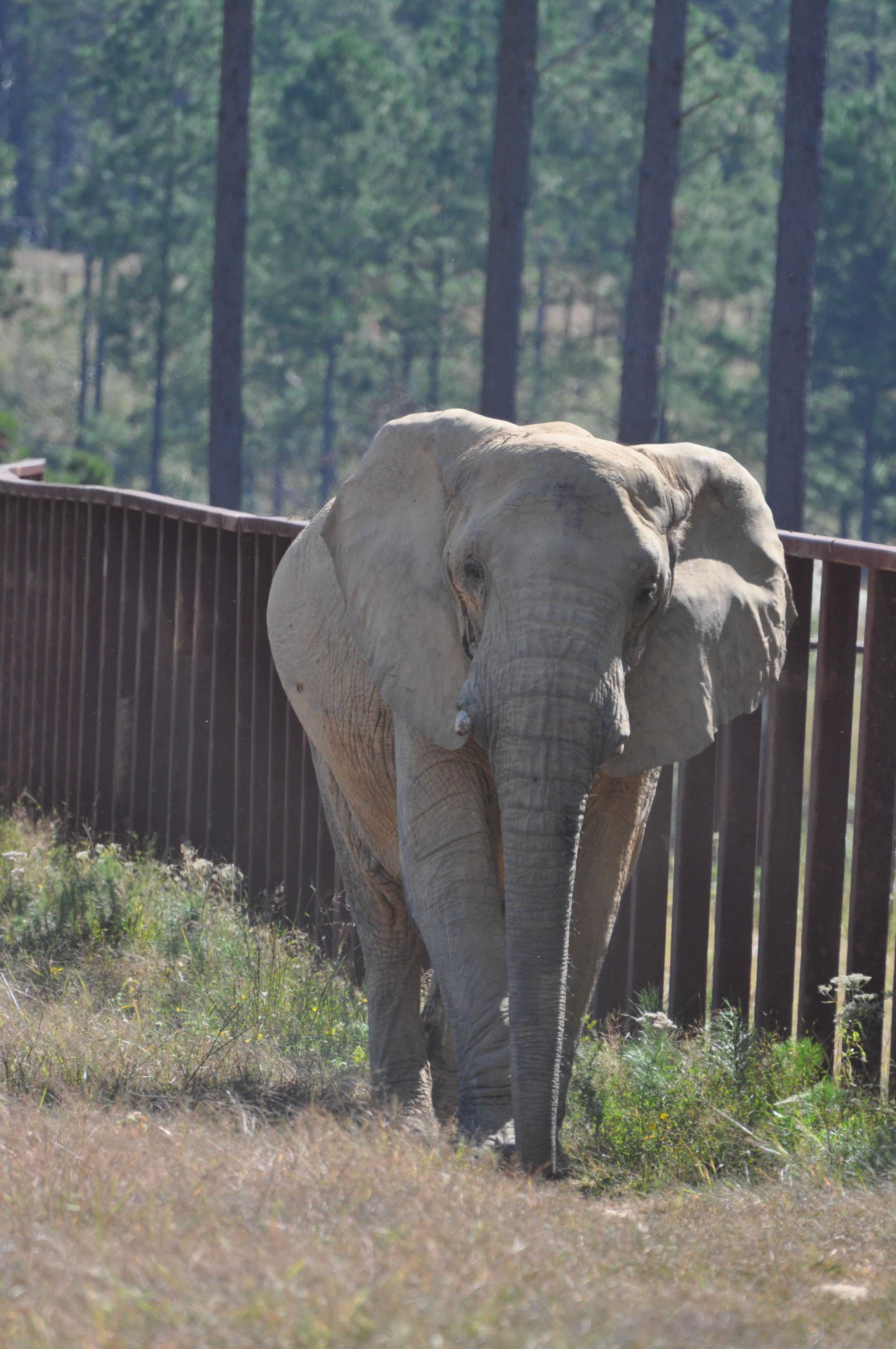Tange and Sukari have been on the move in the African Habitat.
Over the past couple of weeks, African elephants, Tange and Sukari, have been more frequently found in the Upper East area of their habitat, a section neither have traveled to previously. They’ve spent multiple days there, grazing and pushing down trees.
Caregivers opened up the gate between East and North Habitats to give the elephants access to the Plateau, where both Tange and Sukari quickly noticed the waterer and took turns taking a drink before touring the area. The two went for a swim in the mud wallow and spent three days on the Plateau before moving to the Pipeline and then back to the barn, just in time for vet rounds. This past week, they headed back up to the Upper East Habitat. Lead Caregiver Kristy E. said that she’s especially excited to see Sukari exploring new parts of the expansive habitat.

Meanwhile, Flora has been choosing to stick around the barn. She seems to be enjoying the extra attention from Caregivers and is in the process of learning several new behaviors that allow her to participate in her own health care. As usual, she is a quick learner and always ready for the new challenges.

Caregivers are also spending time prepping for winter around the barn, planning Halloween enrichment, and taking routine radiographs of the elephants’ tusks and feet. Tusk radiographs allow Caregivers to examine any cracks or internal damage, while foot radiographs allow them to monitor disease and arthritis.
Caregivers prepare for radiographs by detailing a list of all behaviors that will be used, necessary equipment, team members involved and the role each member will play. There is usually a minimum of five people involved: a head trainer, one or two technicians or secondary trainers, the vet, and a vet technician. The team works to desensitize the elephant to the radiograph block, plate, and generator. Once the elephant places her foot comfortably on the block with no adverse reaction to the team or equipment, images are taken of each digit.
Tusk radiographs are more challenging because the elephant must present her tusks and move them in different positions. Caregivers desensitize the elephant to allow them to touch and examine tusks with the radiograph plate. A ladder is utilized for one of the two main images, so the elephant also must be accustomed to Caregivers approaching her with a ladder. Overall, the entire radiograph process is very fast and minimizes the time that the elephant has to hold a certain position.
To find out more about whole elephant care at The Sanctuary, visit https://www.elephants.com/facilities.
Feed an Elephant
Help The Sanctuary with one of our largest ongoing operating costs! Donations at the $40+ level receive a photo card with information about elephant diets and a one-year subscription to The Elephant Sanctuary’s triannual newsletter, Trunklines.
Each of The Elephant Sanctuary in Tennessee's resident elephants consumes approximately 150 lbs. of food every day. While the elephants forage naturally in the habitat, The Sanctuary staff must also provide additional food and supplements to make sure nutritional needs are met.
$40.00 will feed an elephant for one day and $400.00 will feed all 10 elephants for a day.
Donations of any amount are greatly appreciated and will receive an acknowledgment by email. Your donation will also automatically enroll you in monthly electronic EleNews updates from The Sanctuary.
“In Honor” and “In Memory” gifts are a great way to recognize a special friend or family member. If you choose to make a gift “In Memory” or “In Honor,” the individual or family you designate will receive a certificate informing them a gift has been made in the designee’s name. If the recipient is new to The Elephant Sanctuary, they will also receive the latest copy of Trunklines.
